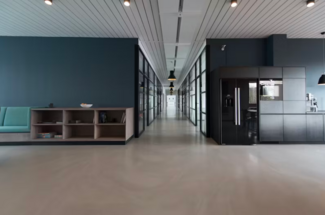The principle of ergonomics implies accessibility because it aims to design tools that enhance the performance of users, including people with disabilities. While accessible and inclusive design is often considered an afterthought, it shouldn't be. This article will serve as a guide to help you create an accessible and inclusive workspace.
Workspace Planning
The foundation of an accessible workspace begins with office design. Office design focuses on creating a space that encourages collaboration, communication, and mobility to best support the business and its employees. Mobility is a key element of office design, and it helps to plan the space in a way that promotes inclusion. This means designing and organizing the workspace to accommodate employees and guests who use wheelchairs or need assistance walking. You can achieve an inclusive workplace by using the services of a workplace designer.
Choosing the right furniture
Furniture plays an important role in the workplace. It is almost inevitable that employees, customers and guests will use furniture during their stay in the building. It is therefore important to select and design it so that it is accessible.
The first point of contact with furniture in an organization is usually guest seating. Having a range of chairs designed to accommodate people of all sizes can have a positive impact on your guests and customers. If a client arrives for a meeting and has to wait on a chair that doesn't fit, the result can be embarrassing. Incorporating guest seating, such as bariatric chairs and sofas with extra-wide seats and a 300-plus pound load capacity, demonstrates your organization's commitment to accessibility.
Ergonomic seating
When you provide your employees with ergonomic chairs, they sit and work in a chair that is custom-made for them. The chairs' adjustability allows them to sit comfortably and maintain good posture while working. Features such as adjustable lumbar support can help relieve pressure on the lower back and reduce back pain. This is especially helpful for workers who suffer from invisible disabilities, such as chronic back pain.
Height adjustable desks
A fixed desk that's too high or too low can be uncomfortable for some workers. Many people can benefit from a sit-stand desk that allows them to work at a comfortable height whether they are standing or sitting. In addition, employees who use wheelchairs or special chairs can configure the height of the desk to match their seating position.
Monitor Arm
The role of the monitor in the workplace is important because it is used on a daily basis. When the monitor is placed on a desk, it is difficult to adjust because it requires employees to slouch or lean forward, resulting in poor posture. Adjustment can be even more difficult for people with disabilities such as neck pain or chronic back pain. Adjustable arms allow workers to raise the screen to an ideal position and make various adjustments without bending or slouching.
Keyboard trays
Typing is one of the most important professional activities, yet it is rarely considered a risk to workers. In fact, poor typing posture can expose workers to carpal tunnel syndrome and neck and back pain. An adjustable keyboard tray makes it possible to customize keyboard placement by adjusting for wrist position and height. These features improve accessibility for employees who may be suffering from invisible pain and need help finding the perfect typing position.
Systems :
Sound masking
Many organizations opt for an open plan layout, and one of the disadvantages of this type of office is noise. Employees need a workspace with minimal distractions to concentrate. Sound masking can be used to control noise, as it introduces level sounds that make office and outside noise less perceptible and speech virtually unintelligible. This creates a balanced acoustic environment and improves productivity. In addition, neuro-divergent employees or those suffering from sensory overload can concentrate better with a minimum of noise distraction.
Air purifiers
Indoor air quality should be a major health concern for workspaces. Air pollution can trigger or aggravate the condition of employees and customers suffering from respiratory disorders such as asthma and allergies.
Quiet rooms
Creating quiet spaces in the workplace can be a game changer for employees, allowing them to take a break to focus on their work or meet with clients without noise or distraction. It's also a great place to make phone or video calls, which benefits both them and their coworkers. The quiet room is even more useful for employees who experience sensory overload. This space allows them to take a breather, step away from the overstimulated environment, and take a brain break while still in the office building.
Technology
In this new world of work, technology and collaboration software are now an integral part of almost every organization. Opting for collaboration applications like Microsoft 365 ensures that every employee's needs are taken into account. The M365 application integrates with assistive technologies and connects to the accessibility settings of most devices. It also provides auto-generated alternative text for images and audio subtitles, enabling everyone to make emails, documents, presentations and meetings more inclusive for employees who may require this option.
Go from ordinary to accessible, inclusive and ergonomic!
Although it may be considered more expensive than an ordinary workspace, planning and designing an accessible workspace can benefit your organization. It would create an environment in which all employees feel supported, improving staff retention. An inclusive and accessible office would also make recruitment less difficult, as future employees would be assured of feeling welcome and comfortable. The strength of this change is that employees feel comfortable while working together to build the organization.


